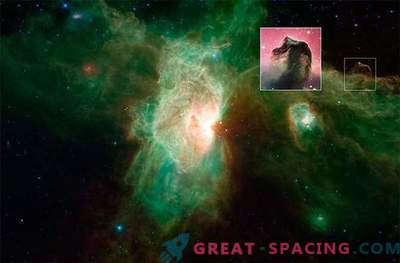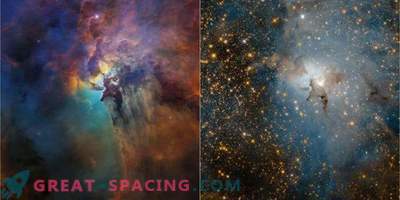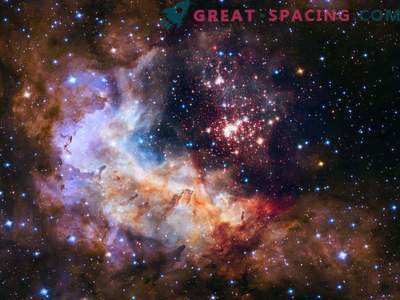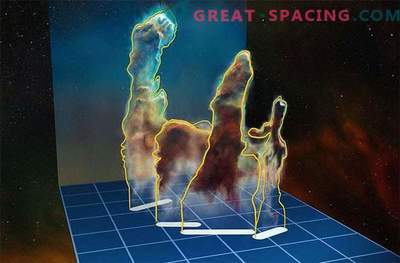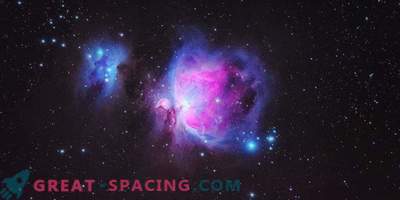
Bright young stars and luminous clouds of gas and dust in the photograph are part of NGC 2174 - the Monkey Head Nebula. Infrared data, which made such a stunning image, were obtained using the wide-angle camera of the Hubble Space Telescope (WFC3) from February 7 to 23 and released in honor of Hubble’s 24th anniversary in Earth orbit.
In other words, it's Hubble's birthday and we all received a gift!
The fantastic shapes of the huge cloud structures are the result of powerful streams of stellar winds emanating from newborn stars visible in the right side of the image. The ultraviolet radiation of stars wraps around the contours of dust and gas surrounding the region, causing them to glow in the infrared, and cuts out billowing pillars that can reach a more light year in length. Hubble has previously photographed the same area in 2011 in visible light. These new infrared observations show much more complex details of the nebula.

Photograph in visible light and infrared image of NGC 2174
The region shown here is about six light-years and shows the “eye” of the Monkey Head nebula.
Hubble was launched on April 24, 1990 using the Discovery Space Shuttle (STS-31) and placed into orbit the next day. The conference, held this week in Rome, marks the 24-year-old year of the space telescope's stay in orbit and launches the jubilee, 25th year.


